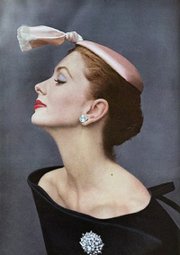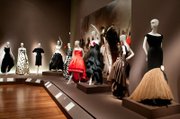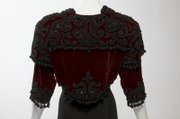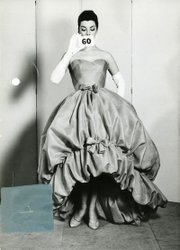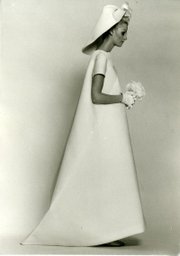Balenciaga and Spain
Often I have wondered how Balenciaga envisaged those bold voluminous shapes of the ’50s, a mid-century fashion innovation. While in San Francisco covering the Academy of Art University’s fashion show, I was lucky enough to attend a private tour of the “Balenciaga and Spain” exhibition at the de Young Museum.....
Cristóbal Balenciaga cocktail hat, 1953, originally published in Vogue, October 15 1953, photo: John Rawlings
And my question was answered. “The forms themselves appear closely related to the all-enveloping cobi jada costumes of Vejer de la Frontera,” – the dress in a region of the master couturier’s Spanish homeland. And that brings to mind the perfectly flounced ruffles at the hem of a dress or the embroidery on a bolero cut jacket and the austere sculptural shapes of dresses created by the master couturier.
It's not often that you can glimpse the lifelong inspiration and passions of a couturier. But "Balenciaga and Spain" provides an exquisite opportunity to truly understand some of the most profound influences behind the designer's body of work. Balenciaga spent most of his career in Paris, but Spain was an ongoing reference throughout his career. He consistently returned to his roots drawing on the Spanish culture finding inspiration in everything from flamenco dancers (ah, the ruffles) to bullfighters (the bolero jackets), and the royal court, regional dress and religious uniforms. The exhibition beautifully displays his work throughout each category to illustrate how each influenced his designs.
Oscar de la Renta, who began his career at Balenciaga’s couture house in Madrid in the ’50s, conceived the exhibition as an ode to his mentor. Titled “Balenciaga: Spanish Master,” it originated in 2010 at the Queen Sofia Spanish Institute in New York. It’s next evolution at the de Young was curated by Hamish Bowles, Vogue’s European Editor-at-Large. It has expanded to include 120 pieces, which are on loan from both museums and private collectors as well as 30 pieces from the House of Balenciaga’s archives in Paris.
“What’s truly extraordinary about Balenciaga,” said Bowles in an interview for The Examiner, “is that from 1937 to his retirement in 1968 he was constantly pushing himself and honing his design ideas. It’s an extraordinary and very unusual trajectory. On the eve of his retirement, when he was in his 70s, his clothes became as abstract and experimental as anything he had ever produced as a young man. Balenciaga was never satisfied with resting on his laurels.”
The exhibition runs until July 4. For more information, go to the de Young Museum website.
The section on the influence of flamenco dance at "Balenciaga and Spain," photo courtesy of de Young Museum.
Cristóbal Balenciaga evening bolero jacket, 1946, collection of Hamish Bowles, photo: Kenny Komer
House photograph of a turquoise silk gauze evening gown, summer 1958, courtesy Balenciaga Archive
Sketch of Balenciaga's "Infanta" evening dress featured in Vogue, September 15, 1939, courtesy of Carl Erickson/Conde Nast Archive
House photograph of a wedding dress and veil of white silk-satin organza and silk gazar, summer 1968, courtesy Balenciaga Arvchive
